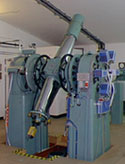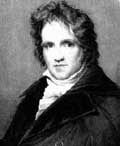Brief History of Astrometry
Despite many attempts from the invention of the telescope, stellar parallax was not actually detected until 1838 by Friedrich Wilhelm Bessel. He measured the parallax of the 5th magnitude binary star 61 Cygni to be 0.3 arcsec.
The parallaxes for the bright stars Vega and α Cen were soon measured by Wilhelm Struve and Thomas Henderson respectively.
Parallax measurements were, however, time consuming and complicated, with the result that by the end of the 19th Century parallaxes had been measured for only about 60 stars.
The early decades of the 20th Century saw improved instruments and techniques including large, long refracting telescopes and photographic plates being used. This resulted in improved precision so that by the 1920s parallaxes as small as 0.01 arcsecs could be measured.
In the 1960s automatic plate measuring machines were introduced. These could scan a photographic plate with greater precision than that achieved manually. Computers became an essential tool for astronomers and allowed larger catalogues to be compiled.
The introduction of charged-couple devices (CCDs) in the 1980s provided astronomers with devices that were far more efficient than photographic plates and could be read directly into computers for analysis. Uncertainties in optical astrometric measurements dropped to one milliarcsecond (1 mas).

Credit: Dafydd Wyn Evans
Modern astrometric telescopes observe hundreds of thousands of stars a night, producing data in digital form. Even the most modern ground-based instruments, however, have to contend with the effects of the atmosphere. Follow the link to investigate the limitations with trigonometric parallax measurements.

